The Iambic Cafe has been in a process of change in recent weeks, and is now emerging in a slightly altered state, as my interest in food tracks itself inward through the body. I’m studying how food can heal, nourish and sustain us, and so I find myself today in Santa Clara California at the annual Weston A Price Foundation Conference. I’m here with some 1,699 others who think food is the answer to many of the ills that we have brought upon ourselves through industrial agriculture, monocropping, pesticide and biotech damage to soil, crops and consumers; environmental contamination; the consumption of industrial foods; and destructive public health policies that have led to dangerous practices such as low fat diets and overmedication.
I have this weekend achieved a long cherished dream to hear  Sandor Katz speak. We met briefly on the floor (literally) of the marketplace at Terra Madre 2008, when he was gathering his blanket with a bemused look on his face, having just sold his last copy of Wild Fermentation. He has published two books since then, and the latest, The Art of Fermentation, is a tome of near biblical proportions which reflects his expanded understanding of all things fermented, and offers extensive footnotes and references. If you’re looking for a cookbook, this is not that. Instead it gives a cultural context plus detailed guidelines for the ingredients and steps involved in fermenting many different foods, in accordance with Katz’s view that fermentation is not a precision activity but a wider cultural movement. Fermentation, he believes, gives us control over our food by allowing us to regain the skills of traditional forms of preservation.. which just happen to offer massive benefits to our gut bacteria as well.
Sandor Katz speak. We met briefly on the floor (literally) of the marketplace at Terra Madre 2008, when he was gathering his blanket with a bemused look on his face, having just sold his last copy of Wild Fermentation. He has published two books since then, and the latest, The Art of Fermentation, is a tome of near biblical proportions which reflects his expanded understanding of all things fermented, and offers extensive footnotes and references. If you’re looking for a cookbook, this is not that. Instead it gives a cultural context plus detailed guidelines for the ingredients and steps involved in fermenting many different foods, in accordance with Katz’s view that fermentation is not a precision activity but a wider cultural movement. Fermentation, he believes, gives us control over our food by allowing us to regain the skills of traditional forms of preservation.. which just happen to offer massive benefits to our gut bacteria as well.
Think you don’t like fermented foods? he asked us. Think again: about a third of what we consume even in a Western Diet involves a degree of fermentation. Coffee, cheese, chocolate, yogurt, bread and vinegar all involve this process of microbial transformation.
 Our history of guiding the transformation began with wine, and the edible repertoire expanded as humans took careful note of the natural processes of rot. For really, says Katz, fermentation spans a fine line between rot and delicacy: one culture’s compost is another’s survival food. Rotting fish, whale, seal or walrus until it has the texture of cheese was the far north’s traditional means of making vitamins and minerals bioavailable. (It was also a concept the Franklin expedition failed to embrace, to their cost: cooking their food killed the nutrients and contributed to the crew’s starvation.)
Our history of guiding the transformation began with wine, and the edible repertoire expanded as humans took careful note of the natural processes of rot. For really, says Katz, fermentation spans a fine line between rot and delicacy: one culture’s compost is another’s survival food. Rotting fish, whale, seal or walrus until it has the texture of cheese was the far north’s traditional means of making vitamins and minerals bioavailable. (It was also a concept the Franklin expedition failed to embrace, to their cost: cooking their food killed the nutrients and contributed to the crew’s starvation.)
Fermentation was not a human invention, but a discovery: our most observant ancestors noticed that insects and animals were attracted to fermenting fruits; the inventive ones simply took that a step further to cause fermentation to happen on their own terms, and then we had wine and mead.
Agricultural societies adopted fermentation as one form of preservation because we simply couldn’t invest all our energy in crops that are seasonally available without some way to keep them stable and edible beyond harvest. Fresh milk is a 20th century phenomenon: most people in this culture have a “fermentation slowing device” in their homes, otherwise known as a fridge. The obsession with safe storage temperatures is a modern concept, because until refrigeration, we never had a way to store foods below 40f.
Nowadays, fermentation is a way to renew our acquaintance with the healthy gut bacteria we’ve been abusing through years of antibiotic use and poor diets. We need bacteria to digest our food and to sustain a healthy immune system and balanced mental functions. The war on bacteria has proven a very misguided campaign when so many of our internal bodily functions have been enabled or enhanced by the presence of bacteria. While the first triumphs of microbiology had to do with the discovery of pathogenic bacteria, we have ever since been having trouble letting go of idea that all bacteria are pathogenic.
Before opening the floor to questions, Katz held up one pre-emptive hand for a question he  knew would otherwise be asked: Safety. From his research, the USDA has never reported a single case of food poisoning from fermented vegetables. Given our recent experience with tainted spinach and cantaloupe, it may be that fermented produces is even safer than raw. The basic reason is that fermented foods are populated with lactic acid bacteria which will overwhelm pathogens. The notorious anaerobic bacterium botulism (clostridium botulinum) can only grow in the complete absence of oxygen (such as in canned foods, sausages), but vegetables are never fermented anaerobically, always with oxygen circulating above and in a liquid which contains some oxygen. In minced meat products (such as sausages) nitrates are what prevent botulism from forming and he doesn’t recommend eating sausages unless they contain nitrates.
knew would otherwise be asked: Safety. From his research, the USDA has never reported a single case of food poisoning from fermented vegetables. Given our recent experience with tainted spinach and cantaloupe, it may be that fermented produces is even safer than raw. The basic reason is that fermented foods are populated with lactic acid bacteria which will overwhelm pathogens. The notorious anaerobic bacterium botulism (clostridium botulinum) can only grow in the complete absence of oxygen (such as in canned foods, sausages), but vegetables are never fermented anaerobically, always with oxygen circulating above and in a liquid which contains some oxygen. In minced meat products (such as sausages) nitrates are what prevent botulism from forming and he doesn’t recommend eating sausages unless they contain nitrates.
After which followed a good hour’s worth of intelligent questioning by people who had attempted fermentation themselves or wondered about the effects and benefits of varieties of these. After that, Katz spent a further couple of hours patiently signing books and answering still more questions. And yes, I got mine, and damn the weight of my poor suitcase!
For those unable to be here but within easy reach of Vancouver, check Katz’s website to learn about his upcoming January visit to UBC.
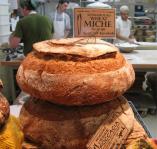

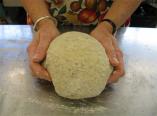

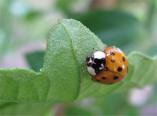
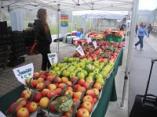

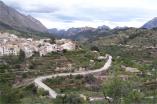
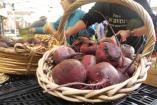

Pingback: Food & mood, sleep & diabetes | Iambic Cafe